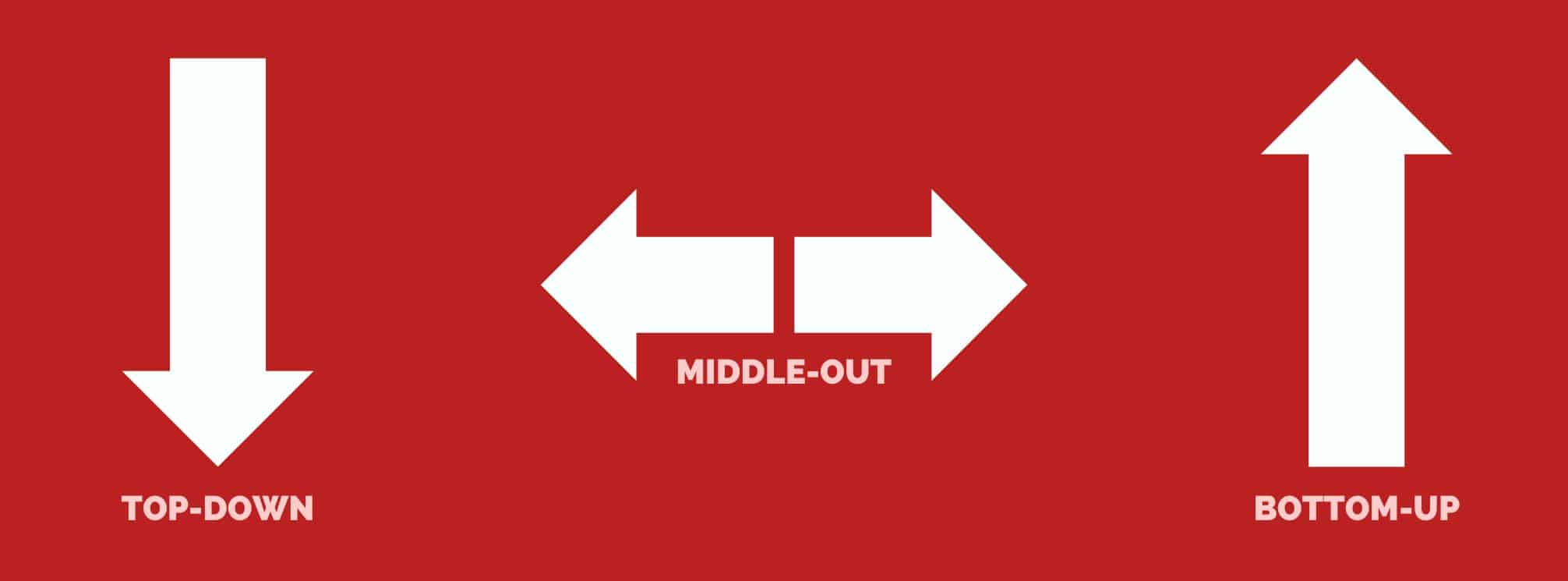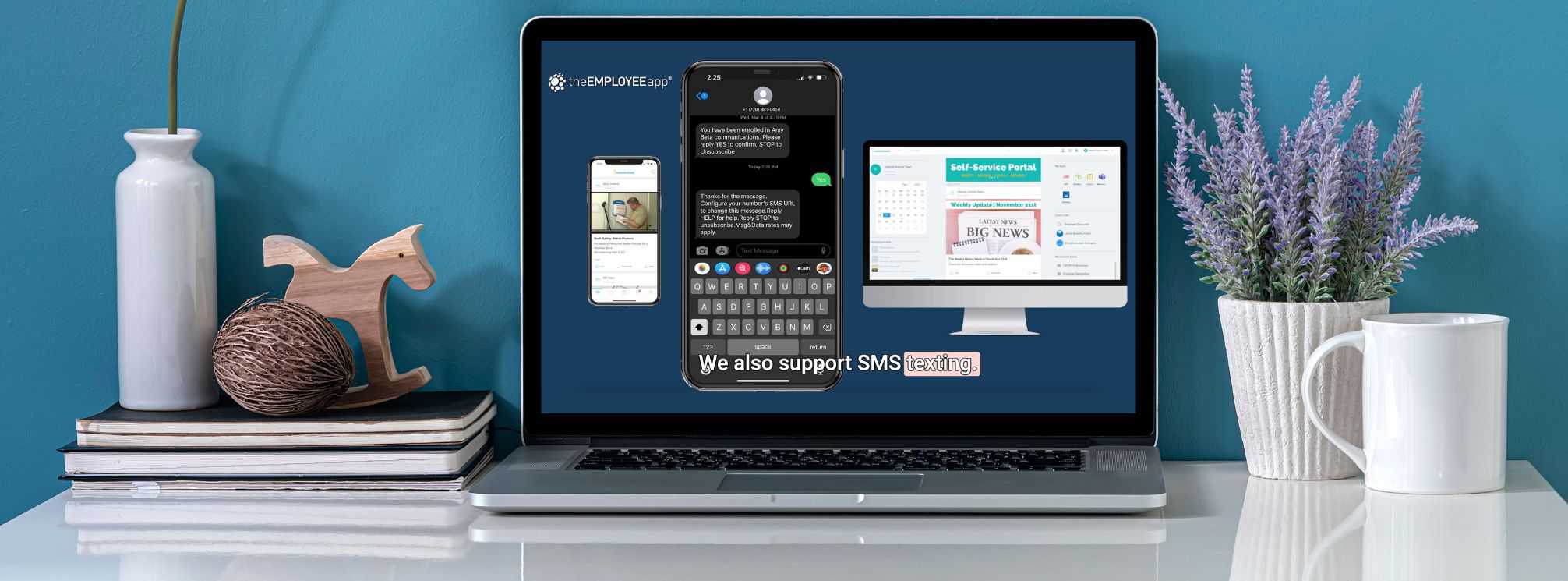
Before we dive into the interview and share mobile employee communication best practices, let’s review some important context.
A mobile application for communication is an app that allows companies to engage and communicate with their employees directly on their mobile-enabled devices. Typically, companies embrace a bring your own device (BYOD) policy to reach their employees without the expense of providing company devices. These apps are then designed to push out communications from the company that will help them do their jobs, be better informed, and improve productivity.
We define employee communication as the two-way communication between employees and their company, or employees and their direct manager.
Employee comms has become a large area of focus at most companies. Poor company communication can be costly. But great communication between employees, teams, and from leadership can lead to reduced turnover, higher profits, and more innovation.
Employee communication professionals focus on three primary types of communication with employees: top-down, middle-out, and bottom-up.

In 2019, IABC‘s Khyla Flores interviewed our Director of Client Success and Strategy Amy Jenkins to discuss mobile employee communications. Even in 2023, we find that many of the mobile communication trends that were relevant then are still relevant now. There is, specifically, a lot of work left to do to support the deskless workforce.
Mobile implementations, such as employee apps, allow communication and HR professionals to communicate with and engage their employees more efficiently.
IABC Associate Editor Khyla Flores recently spoke to the director of client strategy with theEMPLOYEEapp, Amy Jenkins. Amy says employees want access to information and feel connected to what is happening within the company. And that mobile technology can help achieve that connection:
“With the proliferation of mobile technology over the past few years, we recognized the opportunity that it could offer not only to help us distribute targeted information to employees instantaneously, but also to go beyond ‘need-to-know’ information and create engaging and accessible content that our employees truly desired.”
Amy: Whether we’re talking about the way companies are now organized, increasing work-from-home policies and opportunities, various platforms for employers to communicate with their employees, or peer-to-peer chats, tech has been at the forefront of it all. The use of technology and the evolution of a digital workplace is key to companies staying connected to their employees.
Technology has also been a catalyst in changing the way we consume and distribute content in both a personal as well as a professional capacity. As a society, we have increasingly come to expect instant access to information, and the advent of social media has allowed us to do that on a mass scale. In some ways, the workplace is still behind in that sense—with many using email, posters, printed material and dated methods for their internal communication. And more often than not, companies are more concerned with making news known to investors and news networks before sharing that information directly with employees.
Moving forward, companies will need to leverage the right technology to create the same dynamic in the workplace. And to meet the expectations of employees to receive news almost instantly, while remaining efficient and effective.

Amy: Deskless employees are the 2.7 billion-plus workers across the globe who typically don’t have access to a computer, corporate email, or internal intranet—seen predominantly in major industries like healthcare, retail, hospitality, and manufacturing. Because of the nature of their job functions and access restrictions, one of the major challenges is getting relevant, timely, and important information into the hands of those workers to make sure they are best informed, empowered, and engaged.
New technology such as mobile apps play a significant role in eliminating these issues since nearly everyone has a smartphone.
It’s key for communicators to determine how to entice employees to use those solutions and actually consume the content. This means combining the “need-to-know” information (like benefits and payroll) with the “nice-to-knows” (employee news or company wins), to help make sure employees are excited to log in to the app and are informed when they do, so that they keep returning to the platform.
[optin-monster slug=”k2w4nqofqlji4hse8uxo” followrules=”true”]
Amy: Mobile is a more cost-effective solution to engage all employees—whether deskless or desk-bound—with insights. Through mobile, communicators can quickly send push notifications to all employees or targeted groups with a desired message. And they can upload documents within one centralized and accessible hub, which eliminates the time and expense of print/email.
For manufacturing workers, retail workers, or drivers on the road, this can be a game changer. While previous technologies have left these employees behind, mobile can help them feel more valued. This drives feelings of inclusion by connecting them with peers and leaders. And it has a direct impact on productivity and satisfaction.
Amy: One of the mistakes communication and HR leaders make is assuming they know what content people want to receive. First and foremost, communicators should identify who their audience is and what content will resonate the most. You can achieve this by leveraging surveys or focus groups to get in front of employees and better understand them.
Once the content is decided on, it’s also important to consider the strategy behind distributing it. Certain tactics can work through email (e.g. PDFs and long-form text). But a mobile app enables different opportunities such as video, shorter posts, or even podcasts. By redefining the content strategy to mirror your employees’ consumption preferences and habits, engagement will improve. And with it, the employee experience.
A final best practice is about leadership buy-in. Adoption can be low sometimes. Getting the C-suite, frontline managers, and district or regional team members excited about the technology and to serve as ambassadors or evangelists of the platform will only help drive home the importance of adoption with employees. To be successful in using mobile comms to increase engagement and productivity, leaders have to show they’re invested in it. And that they see the value it adds to the overall employee experience.
Request a demo today to find out how we can help you connect and engage your frontline teams.
[optin-monster slug=”gqorn0natkqgyrtjvr6i” followrules=”true”]